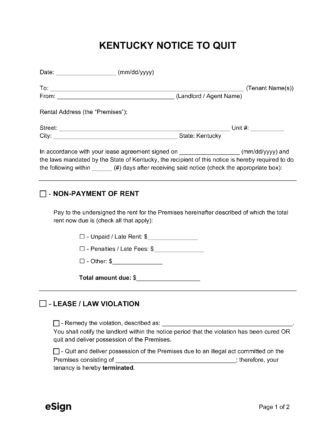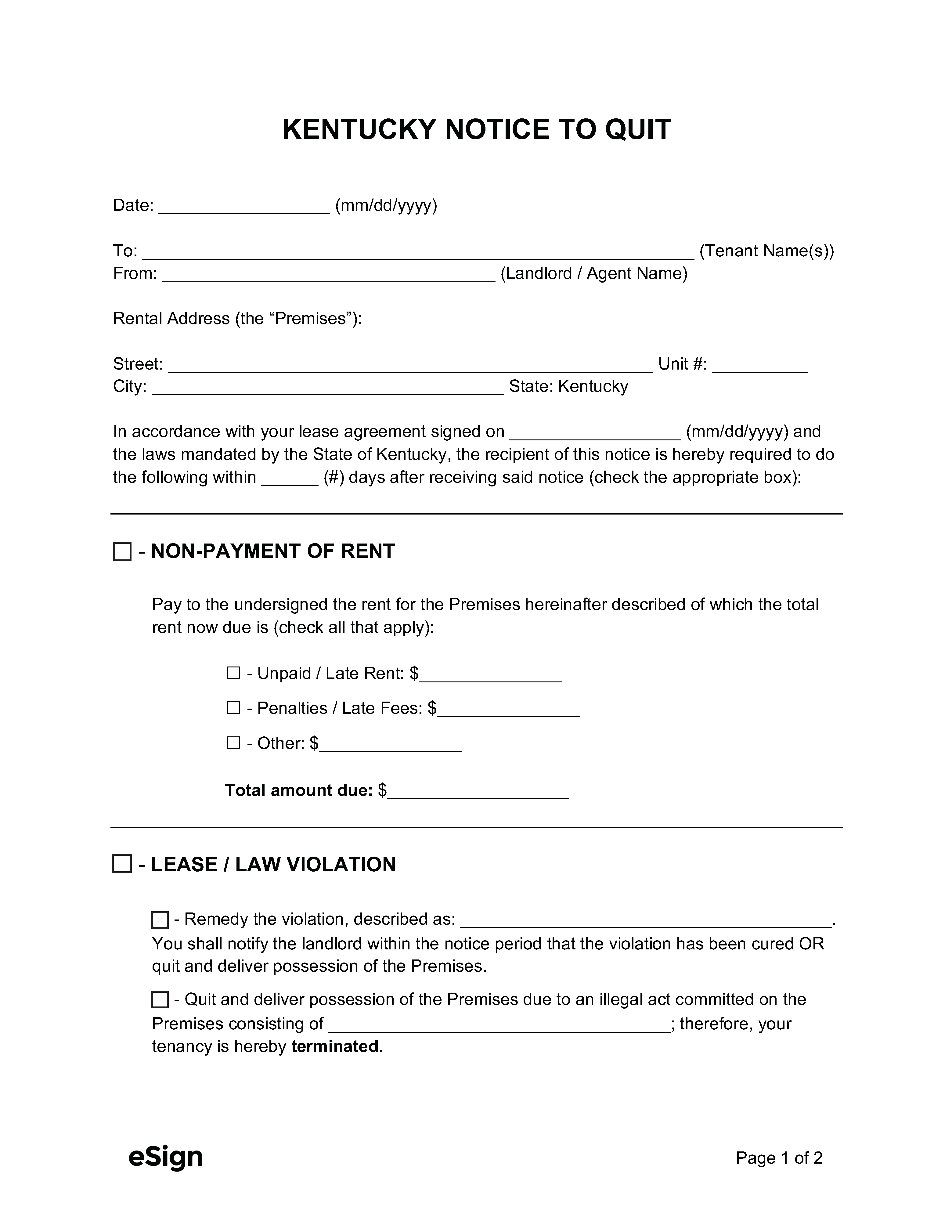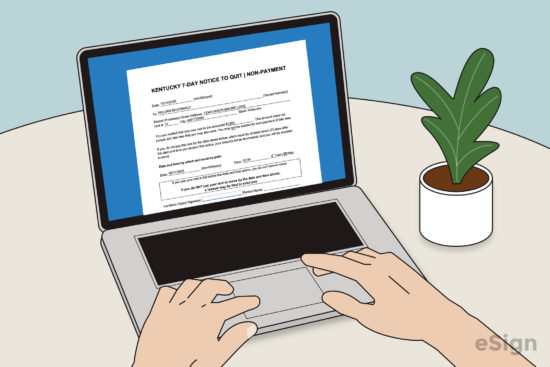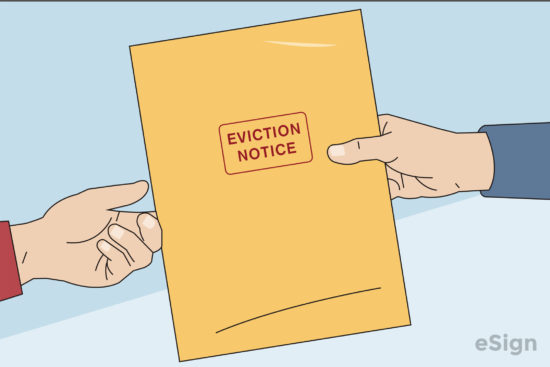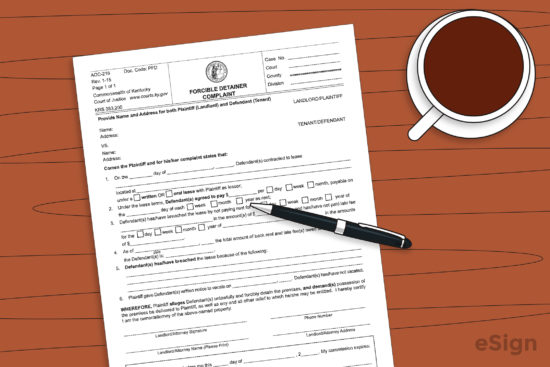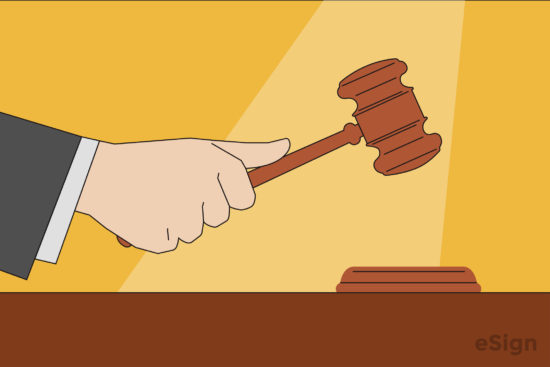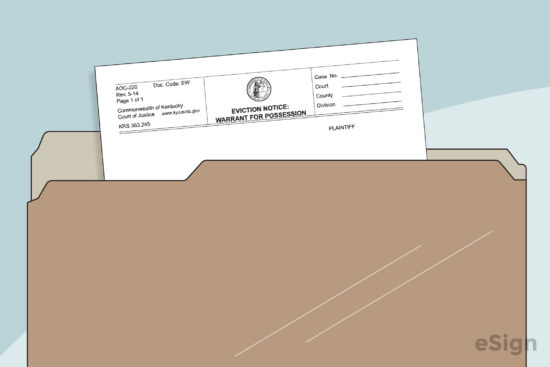Eviction Notices: By Type (3)
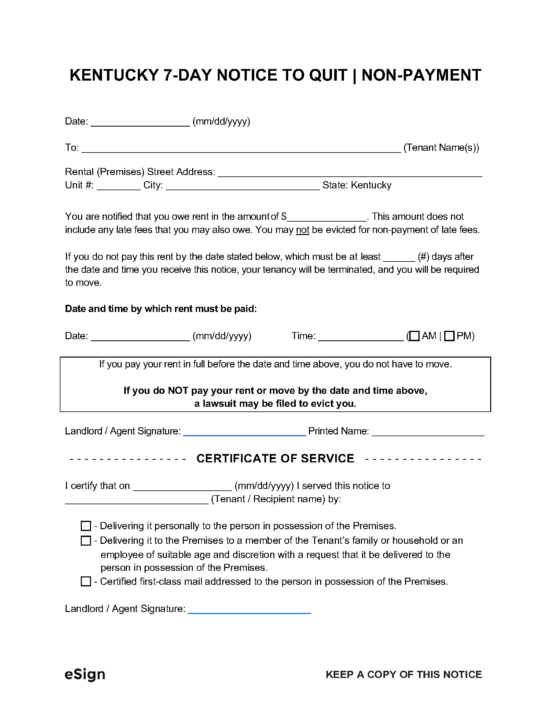 7-Day Notice to Quit | Non-Payment – Notifies a tenant that they have seven days to either pay rent or vacate the leased dwelling. 7-Day Notice to Quit | Non-Payment – Notifies a tenant that they have seven days to either pay rent or vacate the leased dwelling.
Download: PDF, Word (.docx), OpenDocument |
14-Day Notice to Quit | Non-Compliance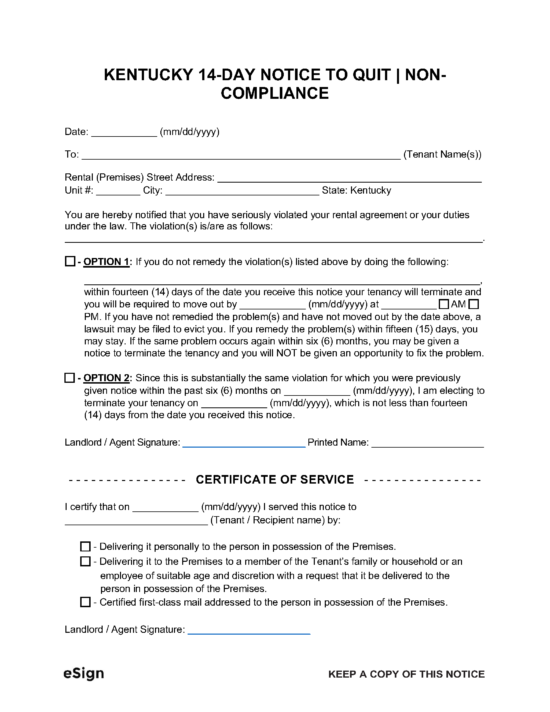 – Informs a tenant that they have 14 days to remedy a lease violation or vacate. – Informs a tenant that they have 14 days to remedy a lease violation or vacate.
Download: PDF, Word (.docx), OpenDocument |
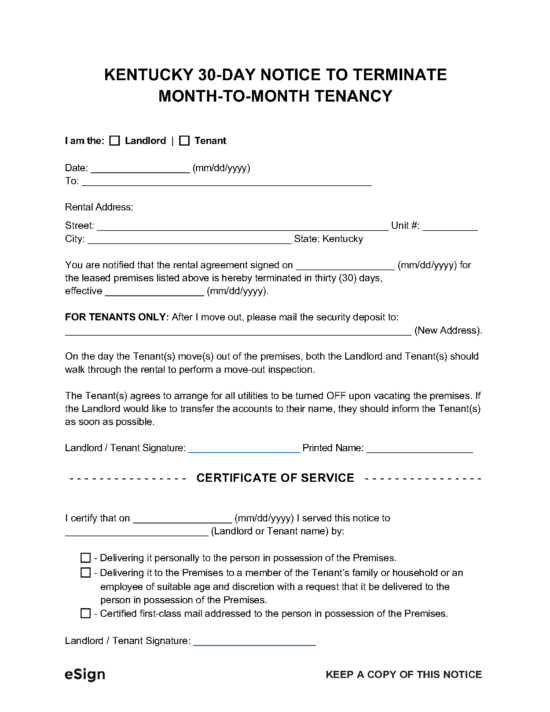 30-Day Notice to Terminate Month-to-Month Lease – Allows a landlord or tenant to terminate a month-to-month lease by providing 30 days advance notice to the other party. 30-Day Notice to Terminate Month-to-Month Lease – Allows a landlord or tenant to terminate a month-to-month lease by providing 30 days advance notice to the other party.
Download: PDF, Word (.docx), OpenDocument |
Notice Requirements
How to Evict a Tenant in Kentucky
Step 1 – Draft Notice
If the tenant violates their lease by failing to pay rent or otherwise, the landlord must first draft a notice to quit to inform them of the breach.
Step 2 – Deliver Notice to Tenant
The notice must be given to the tenant by hand, posted on the premises, or sent by registered mail. After receiving it, the tenant will have 7 days to pay rent or 14 days to remedy a lease violation.
Step 3 – File Complaint for Eviction
If the notice period expires before the tenant pays rent, fixes their lease violations, or vacates the premises, the landlord may proceed by filing a Forcible Detainer Complaint with the district court. The complaint must be accompanied by a Civil Case Cover Sheet and the payment of a filing fee.
Step 4 – Notify Tenant of Court Date
A court date will be set, and the sheriff’s office will serve the tenant a Notice of Eviction Hearing Trial by the Court. This document informs the tenant that an eviction lawsuit has been filed against them and that they must appear in court to defend their case.
Should the tenant fail to appear before the court, a default judgment may be awarded to the landlord. If the parties wish to resolve the matter outside of court, they can file a Forcible Detainer Settlement Agreement.
Step 5 – Eviction Judgement
Once both parties have presented their arguments at the eviction trial, the judge will render their decision. If the landlord wins the eviction trial, they will be awarded a Forcible Detainer Judgment, which orders the tenant to vacate the premises within seven days. The tenant may appeal the judgment within the same seven-day period.
Step 6 – Evict Tenant
If the tenant does not appeal the judgment or vacate the premises within seven days, the landlord must visit the district court to request that a Warrant for Possession be served on the tenant by the sheriff or a constable.
The tenant must vacate within the number of days indicated in the Warrant for Possession. If they continue to occupy the dwelling past the given time period, the landlord may enter with a deputy to evict the tenant from the property.
Court Forms + Resources
Forms
- Civil Case Cover Sheet (AOC-104)
- Signing: N/A
- Forcible Detainer Complaint (AOC-216)
- Signing: Landlord (or Attorney)
- Forcible Detainer Judgment (AOC-217)
- Signing: Judge
- Forcible Detainer Settlement Agreement (AOC-218)
- Signing: Landlord and Tenant and their Attorneys (if applicable)
- Notice of Eviction Hearing Trial by the Court (AOC-215)
- Signing: Clerk
- Warrant for Possession (AOC-220)
- Signing: Landlord (or Attorney) and Judge
Resources
